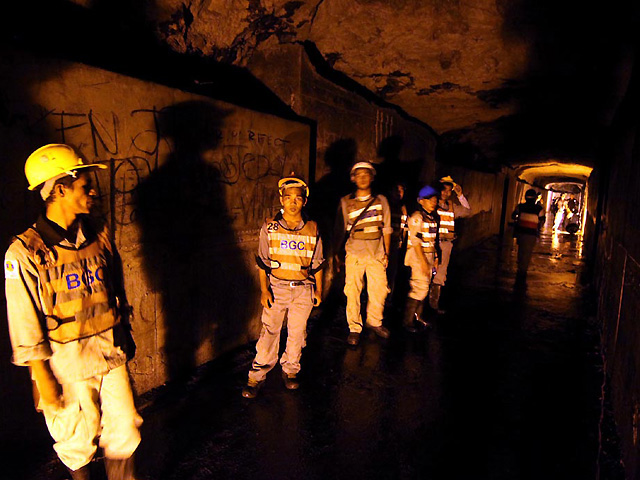Filtered by: Topstories
News
Wartime tunnel in Fort Bonifacio to be declared historic site

BCDA workers on Thursday explore the historic 32-chamber, 2.4-km long, 4-m wide Fort Bonifacio tunnel. Photo by Danny Pata
Built mostly by Baguio natives, the tunnel was first dug in 1936 on orders from Gen. Douglas MacArthur, who was President Manuel Quezon’s military adviser at the time, said the BCDA in a statement.
At 2.4 kilometers long, the tunnel was meant to serve as MacArthur’s headquarters and a military supply stockroom, though the general ultimately did not get to use it.
Following the surrender of Filipino and American forces after the fall of Bataan and Corregidor, Japanese forces gained control of the tunnel and expanded it, using Taiwanese and Filipino workers.
When liberation came in 1945, said the BCDA, American troops used flame throwers to flush out Japanese troops hiding in the tunnel. It was said that even months after the war was declared over, Japanese soldiers would still be caught leaving the tunnel, only to be gunned down by Filipino soldiers waiting outside.
In the 1970s, then-Army chief Maj. Gen. Fortunato Abat revitalized the tunnel by cementing a portion of it. It was also during that period that a task force started digging in the tunnel to look for hidden treasure.
Today, only a 730-meter segment of the tunnel remains unaffected by the Bonifacio Global City development.
BCDA president Arnel Casanova said the agency is currently checking the tunnel's structural integrity and looking into its sustainability.
“This is part of our contribution in raising the awareness of our people [about] the contribution of our Armed Forces, particularly our soldiers, in preserving freedom, liberty and democracy in this country,” he said, adding that people might not be aware of what Fort Bonifacio was like decades ago, especially during the war.
“We have a rich and fascinating history on the Filipino’s struggle for freedom and independence…Such struggle has left historical artifacts that remind us how our forefathers fought for the freedom we now have. Some of these artifacts, such as the Bonifacio Tunnel, are beneath the ground we walk on everyday,” Casanova said. — BM, GMA News
Tags: fortbonifacio, bcda
More Videos
Most Popular




